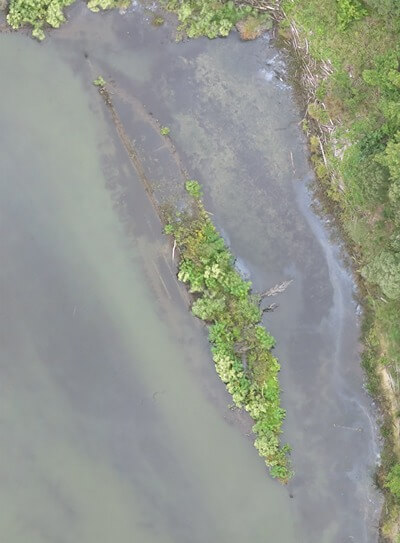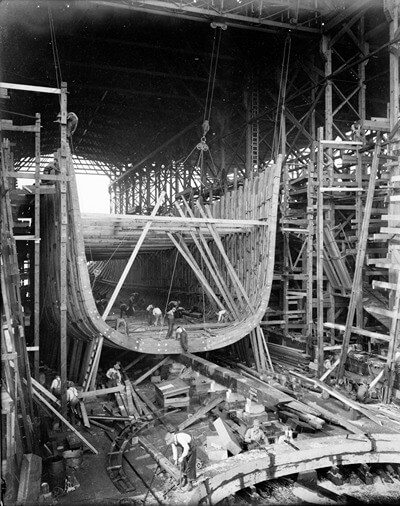Afrania

Ship Stats

State ID: 18CH494
Vessel Type: Merchant vessel (steamship)
Location: 38°28'23.34"N, 77°15'57378"W (38.47315, -77.26605) (Duke University, 2016)
Length: 281 feet 10 inches
Breadth: 45 feet 2 inches
Deadweight Tonnage: 3,500
Gross Tonnage: Not determined
Builder: Grant Smith-Porter Company, Portland, Oregon
Owner: Titled to the State of Maryland under the Abandoned Shipwreck Act
Flora & Fauna: The hulk of the ship is filled with soils that support a dense growth of vegetation, including swamp dogwood, yellow iris, star of Bethlehem, and false indigo, all found in abundance. A large American elm stands 33 feet tall aft of a brick pile located midships. Two dogwood trees, torn by the roots after a storm, hang over the starboard midships and stern.
Significance: United States Shipping Board vessel built for World War I effort
Wreck Site

Today, Afrania rests on its keel, partially submerged with its bow facing north. The ship's present position is different from its 1952 location as was indicated by aerial photographs of the area. It is likely that Afrania was among several vessels that may have drifted from their original anchorage. These ships were later hauled onto the nearshore and fixed in place to prevent continued migration as well as potentially becoming an obstruction to navigation. Small mounds of bricks have been observed amidships.
Historical Background

Afrania was built by Grant Smith-Porter Company in Portland, Oregon, for the United States Shipping Board (USSB). With the USSB request for cargo vessels, especially wooden ships, for the war effort, many firms like Grant Smith-Porter started building large shipyards to accommodate the demand. The Grant Smith-Porter Company eventually had shipyards in both Aberdeen, Washington, and Portland, Oregon, but as of July of 1917, the future location for Portland shipyard was still a swamp. By June 1918, rapid construction and dredging created the necessary slipways for shipbuilding, employing over 6,000 workers at the Portland shipyard. During this time, Grant Smith-Porter Company became one of the most prolific producers of Ferris-type vessels on the West coast.
Afrania was built as a Ferris-type wooden cargo vessel, which is the type found most frequently in Mallows Bay, Maryland. Launched on November 21, 1918, Afrania was not in service during the war, however, it made at least one known trans-Atlantic voyage to Rouen, France, delivering a cargo of redwood in the summer of 1919. Afrania then returned to Norfolk, Virginia, and it is unknown if it made any additional voyages. Shortly thereafter, Afrania was sold for salvage, like many of the Emergency Fleet Corporation vessels built for the war, and was brought to Mallows Bay, Maryland.



